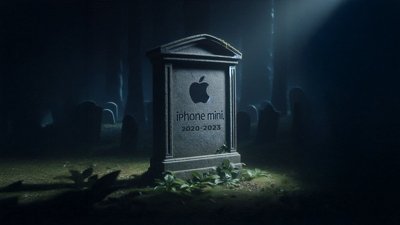A report evaluating the OLED screen used in the Samsung Galaxy S9 has declared it the "best smartphone display," with the creation by Apple's rival said to be better than screens used in the iPhone X and premium mobile devices by other manufacturers under a series of benchmarks.
Video diagnostics firm DisplayMate praises the Samsung Galaxy S9 for having the "latest, most advanced state-of-the-art OLED display," in a smartphone. The shootout report, written by DisplayMate President Dr. Raymond M. Soneira, explains at length the improvements Samsung has put into the display compared to its previous releases, earning DisplayMate's highest ever A+ grade provided to a mobile device's screen.
DisplayMate's declaration ranks the Galaxy S9's display above the iPhone X's OLED panel, which was evaluated by the firm in November, shortly after its release. In that report, the iPhone X was also given an A+ score, and described as having "the most anticipated display ever," and at the time it was called "The best performing smartphone display that we have ever tested."
The Galaxy S9 scores highly in a majority of its testing, including setting a new record score for its color accuracy in a test measured using a spectroradiometer with 41 reference colors, achieving 0.7 JNCD (Just Noticeable Color Differences.) Across each of its calibrated screen modes, the Galaxy S9 is reported to have an absolute color accuracy "visually indistinguishable from perfect," and is "almost certainly considerably better" than most other high definition televisions, tablet screens, notebooks, and monitors, as well as other smartphones.
Another area the Galaxy S9 excelled in is with viewing angles, with a 29 percent decrease in brightness when viewed at a 30-degree angle, far lower than the 55 percent or more seen from typical LED-based smartphone screens.
The report also notes the Galaxy S9 matches or sets display performance records for the highest peak display brightness at 1,130 nits, the largest native color gamut of 113 percent DCI-P3 and 141 percent for sRGB, the highest contrast ratio, and the highest contrast rating in ambient light of 257. The report also notes it to have the smallest luminance shifts with varying picture content, scoring 6 percent, the lowest screen reflectance of 4.4 percent, and the smallest color variation of white at a 30-degree viewing angle, scoring 1.1 JNCD.
"The Galaxy S9 is the most innovative and high performance Smartphone display that we have ever lab tested, breaking and establishing many new display performance records," writes Dr. Soneira in summing up the results. "The level of display performance and excellence has been increasing each year, and the Galaxy S9 has raised the bar higher."
While the report heaps praise on the display, it is noted in the report DisplayMate was provided "pre-release production units" of the Galaxy S9 by Samsung to perform the tests as quickly as possible. Though unlikely, it is possible there may be some variation between the handsets provided for testing and the final shipped product.
The report is good news for Samsung, which has seen its latest mobile device come under fire for failing to beat its main competitor — the iPhone X — in performance. Benchmarks released shortly after launch showed the Exynos 9810 chip used in the S9 to be slower compared to both the Apple-designed A10 and A11, with the iPhone 7 also found to be beating the Galaxy S9+ in other tests.
 Malcolm Owen
Malcolm Owen








-m.jpg)






 Thomas Sibilly
Thomas Sibilly
 Marko Zivkovic
Marko Zivkovic
 Andrew O'Hara
Andrew O'Hara
 Amber Neely
Amber Neely
 William Gallagher
William Gallagher
 Christine McKee
Christine McKee
 Andrew Orr
Andrew Orr









36 Comments
I’m guessing that it’s only a small number of users who make buying decisions based on benchmarks and specs. Doesn’t make any sense whether it’s Apple or Samsung who “wins”. Of course the tech blog trolls and fanboys will duke it out every time. From I read the premium smartphone market has distilled down to two major players, Apple and Samsung and neither seems to be poaching all that many switchers from the other side. The leapfrogging will continue.
It’s too bad she won’t live.
so - it will take longer to do things, but looks good while you’re waiting? ;)
It would have been nice to see comparison numbers between the iPhone X and the S9 to see how big the difference is. While LKrupp is right that most users won’t notice the difference (heck, I’m happy with the display on my 6s,) there are many people who will buy a phone with ‘the best display’ even if they can’t see the difference between that and their 1989 Panasonic TV.
Give that the S9 is several months newer than the iPhone X, it isn’t surprising that the screen is better. Is the display unit of Samsung completely independent, or can/do they hold back better versions for their own products over what they sell to other companies? It could also be a production issue. If Apple projected needing higher numbers for the X than samsung needed for the S9 and production was limited, that could have prevented them from using a better panel in the X.
Good. Keep putting out reports like this and driving Apple and others to get better. There are more things at play than benchmarks when I'm shopping for a phone, ecosystem has 99% to do with it. But competition is good, so I'm glad to hear positive reviews for other manufacturers.